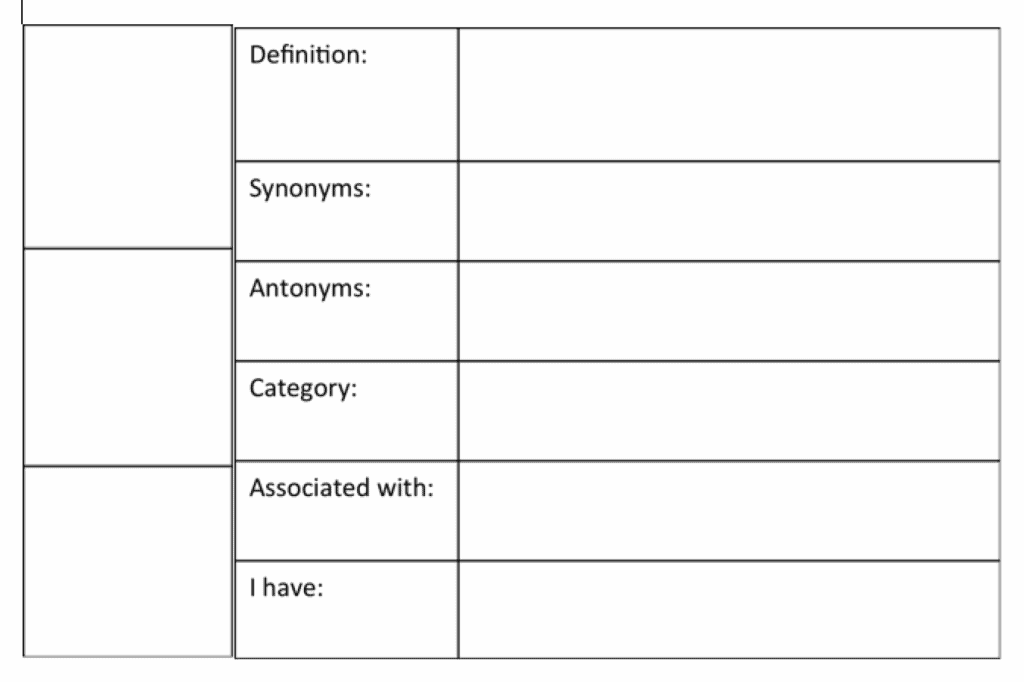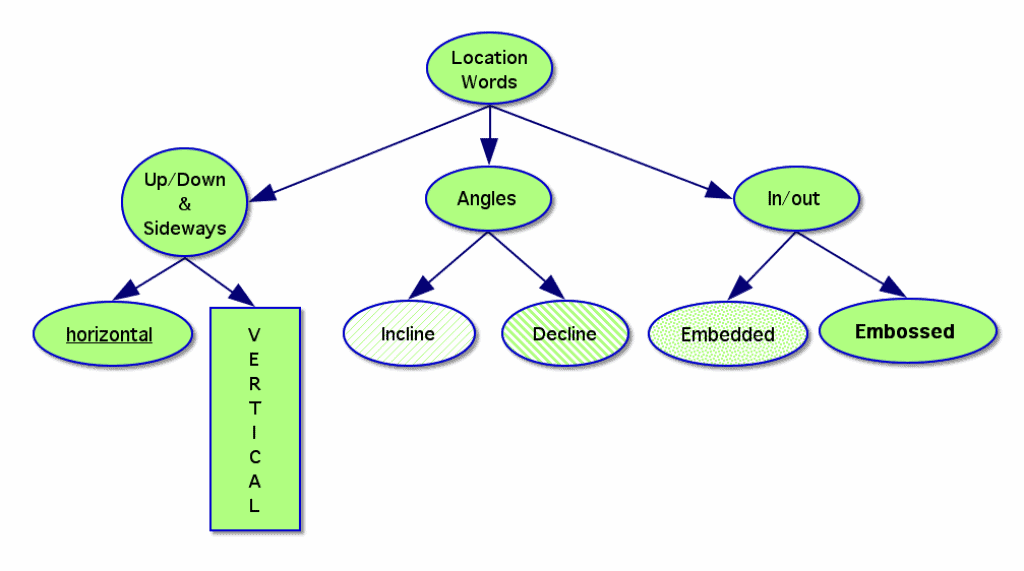

Vocabulary is one of the Five Pillars of Literacy. A deep understanding of nuanced words is key for comprehension and spoken and written communication. Ensuring that students know the right words, that they learn them in a meaningful way, and that they can retrieve them when needed can be tricky and time-consuming for teachers.
Many teachers are unsure which words to teach. One of our favorite, teacher-friendly books on improving vocabulary is Bringing Words To Life, by Beck, McKeown, and Kucan. These authors introduced the concept of Tier 1, 2, and 3 vocabulary. They recommend emphasizing Tier 2 words–the words that add subtlety and nuance of meaning to a given text (e.g., melancholy, prudent, elaborate). These words are frequently encountered in literature and are often the “glue words” that hold concepts together in textbooks, as well. Tier Two words are often not overtly defined in those texts, and context clues about their meaning are often missing.
Strategies:
There are several strategies that can help students more effectively learn word meanings and word relationships. These strategies can apply to the classroom but can be equally effective in blended/flipped classrooms as well.
- Index cards: One common strategy is asking students to write a word on the front and definition on the back of an index card. For Tier One words, (e.g., house), which tend to be more concrete, a definition and a single image are sufficient. However, for Tier Two words, especially ones that are more abstract (e.g., elaborate), it’s useful for students to prepare a slightly more detailed index card that includes three elements. 1) A student-friendly definition consisting of easily understood, familiar words. 2) Synonyms, antonyms, associated words, or even a personal example or experience with that particular word. 3) An image—students can draw or find three images online that show the meaning of the word in a variety of contexts. See below for a blank index card that can be copied for Tier Two words.

- Word Webs: Word webs are very helpful for students to connect new words with known words. This anchors their understanding and helps them think more deeply as they are learning and storing new words, which in turn, increases the likelihood they will be able to retrieve them during oral and written tasks. Here are a couple of examples. The first web would be appropriate to ask students to complete if you have taught six emotion words and want them to arrange the words according to whether they are negative or positive emotions. The second is a completed web to show how direction words could be arranged so that students can more easily retrieve them according to their meaning.


- Incorporate visuals: Visual support can benefit students when learning new vocabulary, not only when we talk about words and define them, but also when we link new words with known words. We have found that many students, when asked to associate a single picture with a concept, either over- or under-generalize their understanding of the concept when they use the single visual as a mnemonic device.
- Semantic Reasoning: We have found that Semantic Reasoning—a process that asks students to infer the overall meaning of words by giving them multiple contexts and examples rather than a definition up-front—works well for students when learning Tier Two words. This step-by-step guide in Workbench will help teachers create their own Semantic Reasoning lessons.
- Integrate technology: Consider integrating tech tools such as Quizlet or Study Stack into vocabulary study. When using these tools, students won’t lose their vocabulary cards and words since they are stored permanently in their account until they delete them—the words they learned in September are still available for review for midterms in January. Moreover, these tools allow users to add pictures for each word and print the cards out. Teachers can share word lists with their students, and students can create groups with other students in their class to collaborate.
Conclusion
As we guide students to more deeply comprehend, store, and retrieve Tier Two vocabulary, they will comprehend what they read and hear better, and they will more readily use sophisticated words in their oral and written communication. We have seen student scores increase on annual assessments, but more importantly, through use of these strategies, teachers share that students are excited to engage in learning.
Beth Lawrence is a speech-language pathologist with 20+ years of experience. She specializes in literacy and works closely with English Language Arts teachers. Beth has been a contributing author in Dr. Kathy Ganske’s Word Sorts & More and Mindful of Words books. She and Deena Seifert authored the norm-referenced Test of Semantic Reasoning, and created InferCabulary, the web-based, K12 application that uses Semantic Reasoning to teach thousands of important vocabulary words associated with categories and literature. They are popular presenters at language and literacy conferences and provide professional development around the country.





